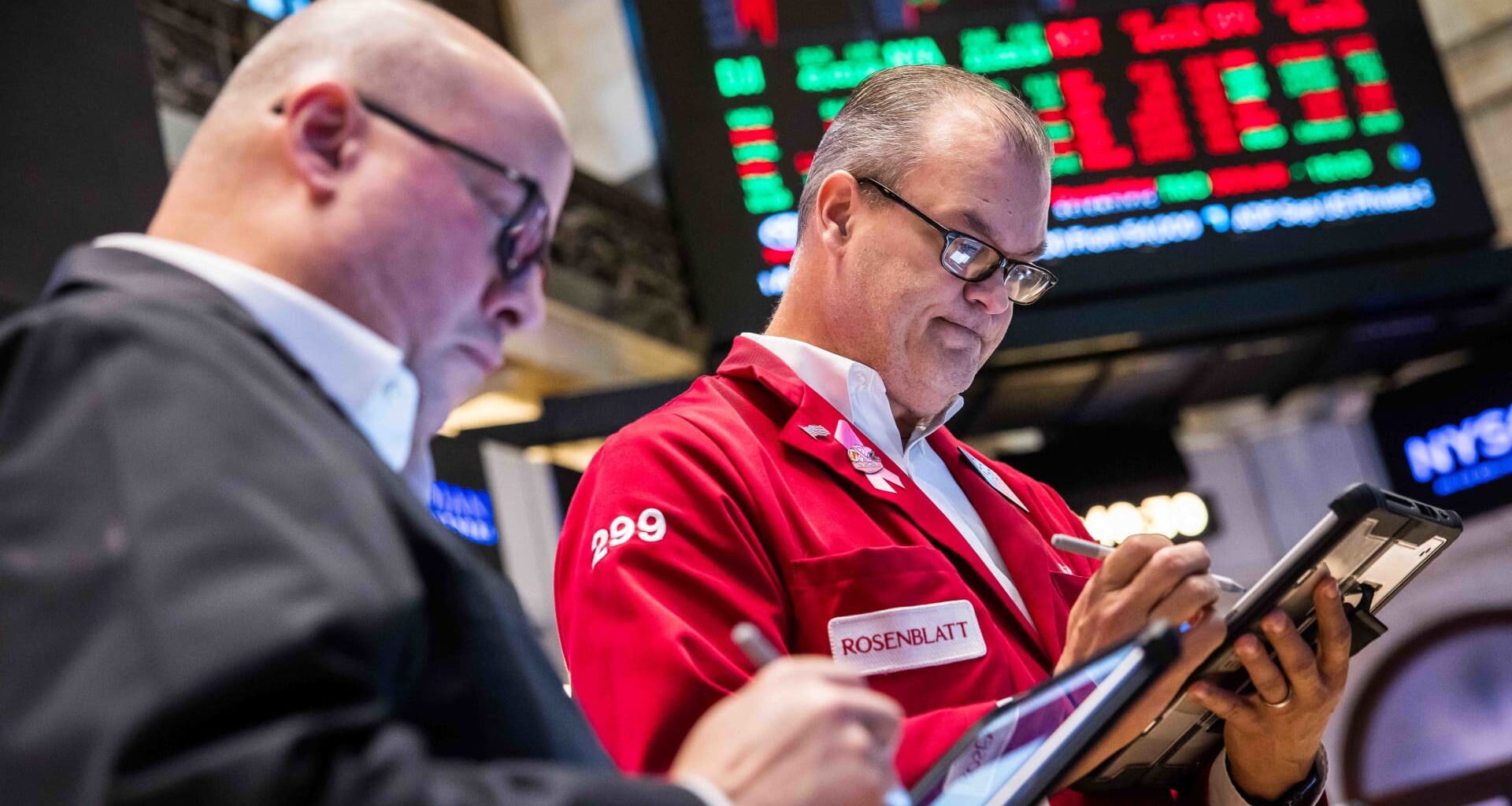Traders work at the New York Stock Exchange on Oct. 1, 2025.
NYSE
The S&P 500 was relatively unchanged on Thursday as investors tried to shrug off concerns tied to a U.S. government shutdown that had entered its second day.
The broad market index fell 0.1%. It was up 0.3% at the day’s peak, reaching a fresh all-time intraday high. The Nasdaq Composite scaled 0.1% and had hit a new intraday record as well, led by a gain in Nvidia shares, which also reached an all-time high, as investors continue to pile into the artificial intelligence giant. The Dow Jones Industrial Average dropped 75 points, or 0.2%.
The three major U.S. stock indexes closed in the green on Wednesday on hopes that a federal funding lapse would be brief and therefore limit any serious effects on the U.S. economy. The S&P 500 notched its 29th closing high of the year, finishing above the 6,700 threshold for the first time, after the index hit a new all-time intraday high earlier in the day. The Dow Jones Industrial Average also saw a record close in the prior session.
“The market knows the playbook for government shutdown right now, so it’s able to look through the slight noise,” said David Wagner, head of equities at Aptus Capital Advisors. “Overall equity index performance has been positive in most funding gaps suggesting little evidence that a funding gap is a rational risk to equity performance.”
The U.S. government shutdown began after top Democrats and Republicans failed Tuesday to meet the deadline to agree on a deal that would keep the government funded. Lawmakers blamed each other for the stoppage as Democrats stayed firm on their demands to use the measure to extend health care tax credits for millions of Americans.
The biggest question for investors is how long the current stalemate will last. It is likely to drag on for at least three days with the Senate set to be out of session Thursday in observance of Yom Kippur, making Friday the next day Senators would be expected to vote again. On prediction markets, traders are betting that the shutdown could drag on for nearly two weeks.
“My belief is this shutdown could last even longer than in 2018 but that other factors will ultimately matter more such as 1) upcoming Q3 earnings being solid, 2) AI euphoria continuing with the Mag7 reporting solid qtrs and 3) the next Fed mtg on 10/29 where I expect the Fed to stay on its course to cut rates three times this year,” Dan Niles, Niles Investment Management founder and portfolio manager, wrote in a Tuesday post on X.
The stock market has historically not been much affected by government shutdowns, but investors are paying closer attention to this one given the more volatile policy and macroeconomic backdrop, elevated market valuations and concentration levels amid the AI-led rally and ongoing inflation concerns. Moreover, President Donald Trump has threatened permanent mass firings of federal workers under a shutdown, exacerbating existing worries about a slowing labor market.
An economic data blackout during the shutdown this week is also top of mind, as the September nonfarm payrolls report will not be released on Friday given the Labor Department’s pause on virtually all activity. The Federal Reserve is expected announce an interest rate cut at its upcoming October meeting after Wednesday morning’s ADP data reflected a drop in private payrolls last month, and as further ramifications of the ongoing shutdown remain to be seen.
